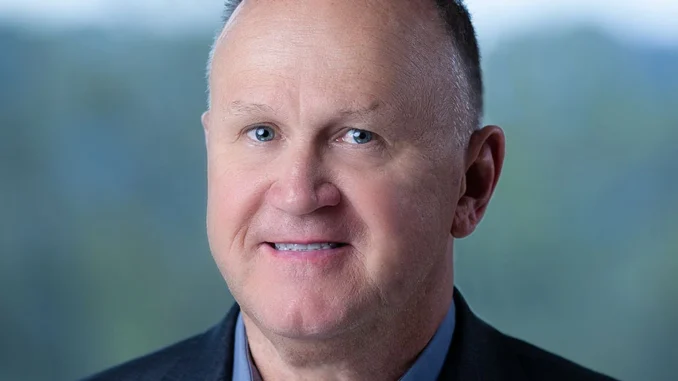
HousingWire recently spoke with Roger Stotts, chief servicing officer at New American Funding, about borrower expectations for servicing and the current outlook for servicers.
HousingWire: What are the current challenges servicers are facing?
Roger Stotts: In some respects, our current challenges are the same ones that good servicers have always faced: doing the right thing for the customer, protecting the interests of the investor and doing these things the right way, which means compliantly and in the most cost-efficient manner possible.
From a compliance perspective, there is a lot of scrutiny from regulators, but that’s not new: it’s been the case since the mortgage crisis.
Obviously cost and efficiency are paramount today, given the sharp drop in origination revenue that the entire industry has experienced. But treating our customers right as always been the primary concern at New American Funding.
Nine years ago, when our ownership decided to take our servicing in house, they knew it would be a big undertaking and expensive. But they didn’t like the way our customers were being treated by the subservicer. That’s what they told me during my interview for this job and treating customers better has been my driving influence ever since.
HW: New American Funding won the most recent J.D. Power Servicing Award as a relatively new servicing operation. Can you share some of the things that New American Funding does routinely that other servicers don’t?
RS: Winning the J.D. Power Award was great and totally unexpected, because it never was our focus.
We won it by doing what we had been doing ever since we started our servicing operation nine years ago: Treating our customers right. Treating our people right. Selecting vendor partners that care about our clients and help us solve problems.
What do we do that other servicers don’t? We try to anticipate changes that are going to be the most traumatic or the least stressful for a borrower and be proactive about them.
Escrow changes, for example. If our annual escrow analysis shows us that there is going to be a monthly increase of a hundred dollars or more, we proactively call the borrower, so they don’t open that envelope and freak out and call us. People appreciate that.
Like every servicer, we’re very focused on call center hold times. We believe a customer should never have to wait more than 30 seconds, and 98% of the time, they don’t. While we monitor how many calls our customer service reps handle, we don’t say that they must handle a minimum number. We never have, our focus is always on quality and how well they did on understanding the borrower’s question and providing the right information. Empathy is a huge part of their quality score.
Finally, we work with vendor partners who have a similar approach to customer service and who will meet you at the table and talk about a problem and come up with a solution — not ignore it. Take tax service. We switched our tax service provider to LERETA about two years ago and anytime we’ve had an issue they’ve immediately fixed the problem and then try to determine why there was a problem in the first place.
So, the J.D. Power Award is not just our award, it’s also our business partners’ award. If they weren’t doing their job for our customers, we wouldn’t have been recognized.
HW: What do you think borrowers will expect from their servicers moving forward?
RS: Borrowers are more sophisticated today and want information and answers in real time. And the reality is most of the time, they don’t want to talk to a person (unless there’s a problem.) For the most part, they prefer to deal with their servicer online or by email.
One of our bigger initiatives this year has been how to better serve our Latino customers. We’ve been doing this, of course, in our call center with the Spanish-speaking customer service reps. Now we have begun updating a number of our documents to make sure that we are serving our limited English proficiency customers.
What will your customers want in the future? Maybe the ability to make payments on their debit cards or Zelle their payments. Today, we can’t justify the expense to implement that technology, but in the future, if we see enough demand, we’d definitely consider it.
Interestingly, our company gets a lot of insight about what customers want and/or customer issues from our loan officers. If I get 10 calls a month about customer issues, eight of them are probably from LOs. They have their ears to the ground when it comes to what the customer really wants.
HW: What does the servicing landscape look like for the rest of 2023 and early 2024?
RS: I think the servicing landscape is going to be more unpredictable this year. The economy and the real estate market could become a headwind, though so far at last they haven’t had a major impact on loan performance or defaults.
Right now, servicers are in a kind of “no-man’s land” in terms of COVID protections. For a while it looked like they were going to end, but now it seems like the Consumer Financial Protection Bureau and Federal Housing Finance Agency want to extend them. On one hand, this will give servicers more options in what we’re able to offer customers with GSE loans. But can private investors afford to offer the same options?
Even with these plans, frankly, not every borrower will qualify or will make it, despite forbearance and modifications. For those borrowers that have equity — and the good news is that most have a fair amount — selling might be the best option. But those that don’t will present a challenge, because the regulators have put the industry on notice about traditional default options. Finally, as long as servicing valuations remain high, and origination volume stays at current depressed levels, we’ll see a fair amount of MSR trades to help lenders meet the bottom line.



